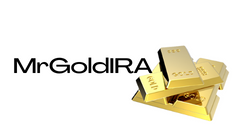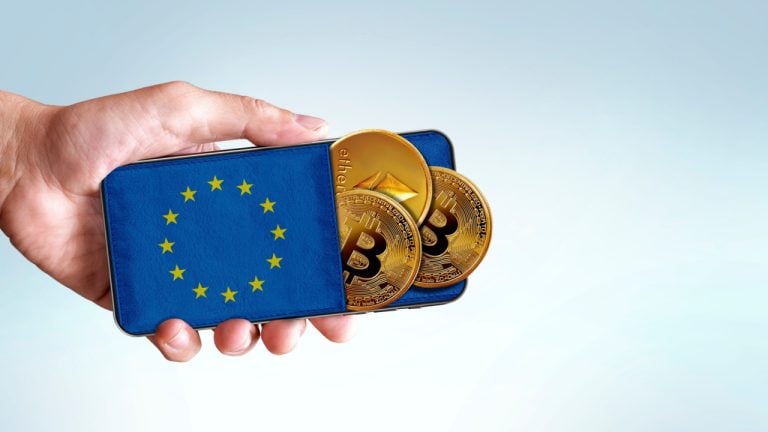
Introduction
The European Union Council and Parliament have reached a provisional agreement that will impose new requirements on crypto asset service providers (CASPs). These measures aim to mitigate risks associated with self-hosted wallets and prevent fraud, organized crime, and terrorism financing. In addition, the agreement introduces a new cash payment limit and expands the list of obliged entities.
New Requirements for Crypto Asset Service Providers
Under the agreement, CASPs will now be included in the list of obliged entities that are required to conduct due diligence on their customers. This means that CASPs must verify the facts and information of users whose transactions exceed $1,090 or €1000. By adding CASPs to the list, the EU aims to enhance the fight against money laundering and terrorist financing.
Mitigating Risks with Self-Hosted Wallets
The Council of the EU states that the due diligence measures for CASPs, including reporting suspicious activity, aim to mitigate risks associated with transactions involving self-hosted wallets. This step is crucial in preventing illicit activities and ensuring the integrity of the financial system.
Expanding the List of Obliged Entities
The agreement expands the list of obliged entities to include traders of luxury cars, airplanes, yachts, and cultural goods. Professional football clubs also become obliged entities under the new regulations. However, EU members have the discretion to remove the football sector from the list if they perceive it to be a low risk. This expansion underscores the EU's commitment to combating money laundering across various sectors.
New Cash Payment Limit
To make it harder for criminals to launder illicit funds, the EU will impose a cash payment limit of nearly $11,000. This restriction aims to discourage the use of cash for large transactions. Additionally, the agreement introduces new cash payment thresholds for occasional crypto users. Obliged entities will need to identify and verify the identity of individuals conducting cash transactions between €3,000 and €10,000.
Enhanced Responsibilities for Financial Intelligence Units
The agreement also outlines the enhanced responsibilities of member states' respective financial intelligence units (FIUs). Each unit will have immediate and direct access to financial, administrative, and law enforcement information. This access will include data related to crypto transfers, national motor vehicles, and customs information. Strengthening the FIUs' capabilities will facilitate more effective detection and prevention of illicit financial activities.
Approval Process
Following the agreement between the Council and Parliament, the text of the provisional agreement will now be presented to member states' representatives and the EU for approval. Once approved, these new regulations will become part of the EU's anti-money laundering system.
Conclusion
The European Union's latest anti-money laundering rules demonstrate its commitment to combatting financial crimes and ensuring the integrity of the financial system. By imposing new requirements on crypto asset service providers and expanding the list of obliged entities, the EU aims to leave no space for fraudsters, organized crime, and terrorists to legitimize their proceeds through the financial system. These measures, coupled with the introduction of a cash payment limit, represent significant steps towards a more secure and transparent financial landscape.
What are your thoughts on the European Union's latest anti-money laundering rules? Let us know in the comments section below.
Frequently Asked Questions
Who owns the gold in a Gold IRA?
The IRS considers an individual who owns gold as holding “a form of money” subject to taxation.
To take advantage of this tax-free status, you must own at least $10,000 worth of gold and have been storing it for at least five years.
Owning gold can also help protect against inflation and price volatility, but it doesn't make sense to hold gold if you're not going to use it.
If you plan to eventually sell the gold, you'll need a report on its value. This could impact the amount of capital gains taxes your owe if you cash in your investments.
It is a good idea to consult an accountant or financial planner to learn more about your options.
Can I buy Gold with my Self-Directed IRA?
Although you can buy gold using your self-directed IRA account, you will need to open an account at a brokerage like TD Ameritrade. If you have an existing retirement account, you can transfer funds to another one.
The IRS allows individuals contributing up to $5.500 each ($6,500 if married, filing jointly) into a traditional IRA. Individuals are allowed to contribute $1,000 each ($2,000 if married or filing jointly) to a Roth IRA.
If you do decide you want to invest your money in gold, you should look into purchasing physical bullion instead of futures contracts. Futures contracts can be described as financial instruments that are determined by the gold price. They let you speculate on future price without having to own the metal. Physical bullion, however, is real gold and silver bars that you can hold in your hand.
How is gold taxed in an IRA?
The fair market price of gold when it is sold determines the tax due on its sale. If you buy gold, there are no taxes. It is not income. If you sell it after the purchase, you will get a tax-deductible gain if you increase the price.
You can use gold as collateral to secure loans. Lenders try to maximize the return on loans that you take against your assets. This often means selling gold. This is not always possible. They may keep it. They might decide to sell it. You lose potential profits in either case.
If you plan on using your gold as collateral, then you shouldn't lend against it. Otherwise, it's better to leave it alone.
Should You Open a Precious Metal IRA?
The most important thing you should know before opening an IRA account is that precious metals are not covered by insurance. There is no way to recover money that you have invested in precious metals. This includes all investments that are lost to theft, fire, flood, or other causes.
This type of loss can be avoided by investing in physical silver and gold coins. These items can be lost because they have real value and have been around for thousands years. If you were to sell them today, you would likely receive more than what you paid for them when they were first minted.
You should choose a reputable firm that offers competitive rates. It's also wise to consider using a third-party custodian who will keep your assets safe while giving you access to them anytime.
You won't get any returns until you retire if you open an account. Remember the future.
How to open a Precious Metal IRA
The first step in opening an Individual Retirement Account, (IRA), is to decide if it's something you want. If you do, you must open the account by completing Form 8606. To determine which type of IRA you qualify for, you will need to fill out Form 5204. This form must be submitted within 60 days of the account opening. After this, you are ready to start investing. You can also choose to pay your salary directly by making a payroll deduction.
You must complete Form 8903 if you choose a Roth IRA. The process for an ordinary IRA will not be affected.
To qualify for a precious-metals IRA, you'll need to meet some requirements. The IRS says you must be 18 years old and have earned income. Your earnings cannot exceed $110,000 per year ($220,000 if married and filing jointly) for any single tax year. Contributions must be made regularly. These rules will apply regardless of whether your contributions are made through an employer or directly out of your paychecks.
You can use a precious metals IRA to invest in gold, silver, palladium, platinum, rhodium, or even platinum. You can only purchase bullion in physical form. This means you won't be allowed to trade shares of stock or bonds.
You can also use your precious metallics IRA to invest in companies that deal with precious metals. This option may be offered by some IRA providers.
However, investing in precious metals via an IRA has two serious drawbacks. First, they aren't as liquid than stocks and bonds. This makes it harder to sell them when needed. They don't yield dividends like bonds and stocks. So, you'll lose money over time rather than gain it.
How much should your IRA include precious metals
When investing in precious metals, the most important thing to know is that they aren't just for wealthy people. They don't require you to be wealthy to invest in them. In fact, there are many ways to make money from gold and silver investments without spending much money.
You might think about buying physical coins such a bullion bar or round. You could also buy shares in companies that produce precious metals. Another option is to make use of the IRA rollover programs offered by your retirement plan provider.
You will still reap the benefits of owning precious metals, regardless of which option you choose. Although they aren’t stocks, they offer the possibility for long-term gains.
Their prices are more volatile than traditional investments. If you decide to sell your investment, you will likely make more than with traditional investments.
Statistics
- If you take distributions before hitting 59.5, you'll owe a 10% penalty on the amount withdrawn. (lendedu.com)
- Instead, the economy improved, stocks rebounded, and gold plunged, losing 28 percent of its value in 2013. (aarp.org)
- This is a 15% margin that has shown no stable direction of growth but fluctuates seemingly at random. (smartasset.com)
- If you accidentally make an improper transaction, the IRS will disallow it and count it as a withdrawal, so you would owe income tax on the item's value and, if you are younger than 59 ½, an additional 10% early withdrawal penalty. (forbes.com)
- Indeed, several financial advisers interviewed for this article suggest you invest 5 to 15 percent of your portfolio in gold, just in case. (aarp.org)
External Links
finance.yahoo.com
investopedia.com
cftc.gov
law.cornell.edu
- 7 U.S. Code SS7 – Designation boards of trade as contract market authorities
- 26 U.S. Code SS 408 – Individual retirement account
How To
The History of Gold as an Asset
From ancient times to the beginning of the 20th century, gold was used as a currency. It was popular because of its purity, divisibility. uniformity. scarcity and beauty. In addition, because of its value, it was traded internationally. Because there were no internationally recognized standards for measuring and weighing gold, the different weights of this metal could be used worldwide. For example, one pound sterling in England equals 24 carats; one livre tournois equals 25 carats; one mark equals 28 carats; and so on.
In the 1860s, the United States began to issue American coins made from 90% copper, 10% Zinc, and 0.942 Fine Gold. This led to a decline in demand for foreign currencies, which caused their price to increase. The price of gold dropped because the United States began to mint large quantities of gold coins. The U.S. government needed to find a solution to their debt because there was too much money in circulation. To do this, they decided that some of their excess gold would be sold back to Europe.
Many European countries didn't trust the U.S. dollars and started to accept gold for payment. Many European countries started to accept paper money as a substitute for gold after World War I. The price of gold rose significantly over the years. Even though the price fluctuates, gold is still one of best investments.
—————————————————————————————————————————————————————————————-
By: Terence Zimwara
Title: EU Crypto Regulations: New Requirements for Crypto Asset Service Providers
Sourced From: news.bitcoin.com/eu-provisional-agreement-crypto-asset-service-providers-added-to-obliged-entities-list/
Published Date: Fri, 19 Jan 2024 06:30:20 +0000




















